#exhibition review
Exhibition review: Audrey Hepburn: Portraits of an Icon
TheAudrey Hepburn: Portraits of an Icon exhibition currently showing at London’s National Portrait Gallery (NPG) is a master-class in how to keep a movie star’s estate strong decades after her death.
Based on photos lent by Hepburn’s sons Luca Dotti and Sean Hepburn Ferrer, the exhibition reinforces the image of the actress as we know her: pretty, gamine, elegant, well-dressed and thoughtful. Even the few pictures shown for the first time drive that point home.
This is the official story of Audrey Hepburn: her struggles during the war, her first-class ballet skills, her Hollywood break, her relationship with Givenchy. It culminates with her retirement from the public eye and her collaboration with UNICEF - every single trope of the Hepburn biography gets a tick, in chronological order.
Each film is evoked through a couple of visuals, an unexpected reminder that Hollywood has always liked pairing young female actress with (much) older male leads. But in this exhibition, such issues are never discussed. The biographical notes draw some parallels between Hepburn’s rise and popularity within the evolution of women’s role in society during the 50s and 60s, but only slightly: that issue would have been worth a full exhibition in itself.
Dotti speaks of a clash between Hepburn, his mother, and Hepburn, the woman the public projects, based on the Breakfast at Tiffany’s black dress and hairdo. He argues that we are now more interested in knowing her for who she really was, the kindest, funniest person to be around. Yet that aspect of her personality is drowned in the exhibition by the usual Hepburn iconography, and even when it shines through, it merely reinforces what feels like Perfect Hepburn.
I left frustrated by the lack of angle and opinion expressed in the exhibition, but impressed by the way in which Hepburn managed to build a unifying brand, one that her heirs can carry on. Over 60 years after her first break in Gigi on Broadway, they have the narrative down to a T, all the asperities rubbed away by time and the public’s desire to see Hepburn as the epitome of class and perfection.
Portraits of an Icon fits its brief in that way: we want to see the Hepburn we know, and nothing else. We want to see what made her an icon in the first place. Any divergence from this line would probably have resulted in fewer ticket sales.
Showing until 18 October 2015. Tickets from £10.
Post link
Tooi [Tuai], Drawing of Korokoro’s moko, 1818, paper, 30 x 50 cm, Sir George Grey Special Collections, Auckland Libraries.
‘Oceania’ at the Royal Academy
★ ★ ★ ★
I have been truly spoilt this year with regards to my love of all things Pacific: from my trip to New Zealand, to the numerous exhibitions in London covering various areas of the subject. The Royal Academy’s ‘Oceania’ showcases the art from island nations across the world’s largest body of water. Over 200 pieces are on display, including canoes, traditional clothing, ceramics and sacred sculptures, and are presented thematically to reveal the stories and narratives that have shaped the history of these indigenous peoples.
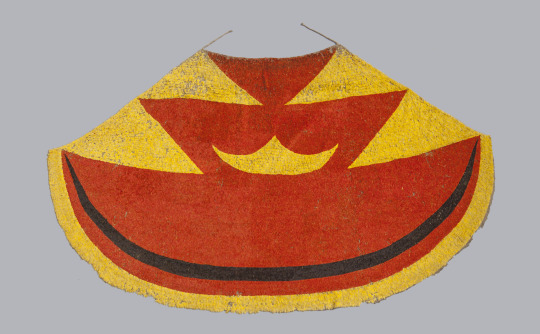
Ahu ula (feather cloak) belonging to Liholoho, Kamehameha II., early 19th century, feathers, fibre, painted barkcloth (on reverse), 207 cm, Museum of Archaeology and Anthropology, University of Cambridge.
The exhibition covers over 500 years of Pacific culture, right up to the modern era. My highlight, in fact, came from New Zealand contemporary artist Lisa Reihana. Her work in Pursuit of Venus [infected] is a reappropriation of the 19th-century panoramic woodblock piece Les sauvages de la mer Pacifique. The latter was a romanticised vision of colonial discovery in the Pacific, whereas Reihana takes a more realistic approach to the dramatic encounters between native islanders and the European settlers. Her piece is a slow-spanning panoramic film, featuring animation and filmed reenactments. Visitors can sit in the darkened cinematic gallery and observe mini-storylines, such as a colonial artist being attacked by native insects whilst trying to paint, and a tense confrontation between tribal warriors and gun-wielding soldiers. It’s addictive viewing, though it lasts a full hour, so make sure you have enough time to experience it thoroughly!
‘Oceania’ is on at the Royal Academy until 10th December. All images are courtesy of the Royal Academy.
Post link
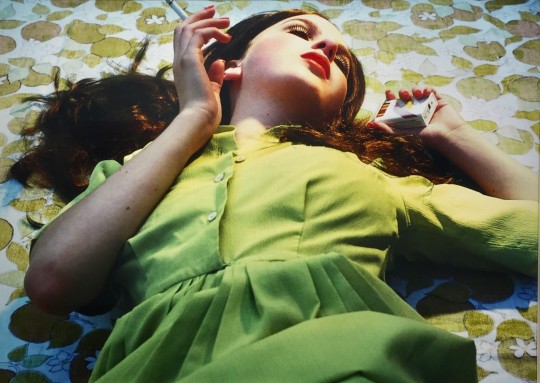
Alex Prager, Desiree(fromThe Big Valley), 2008, c-print, Alex Prager Studio.
‘Alex Prager: Silver Lake Drive’ at The Photographers’ Gallery
★ ★ ★ ★ ★
It has been well over a year since I visited a solo exhibition in the photographic medium (Wolfgang Tillmans at Tate Modern, February 2017, for those who care). I was actually recommended ‘Alex Prager: Silver Lake Drive’ by a kind client at work, and though it is not in character for me to follow such advice when it comes to exhibitions - especially for a show I’d never even heard of - boy, am I glad I did.

Alex Prager, Four Girls (fromPolyester), 2007, c-print, Alex Prager Studio.
Prager (1979-) is an American photographer and filmmaker whose work takes on the aesthetics of mid-20th-century Hollywood cinema and stylised fashion photography. Boldly saturated colours, glamorous costumes and almost comic make-up feature in her work, but don’t think Prager is solely focused on the ‘look’. Layers of emotion and storytelling are there for the viewer to find, particularly in the Crowd series, in which groups of individuals in public spaces are depicted in sharp focus and detail. And because everyone is equally emphasised, the eye is constantly darting across the image, seeking new characters and objects to analyse.
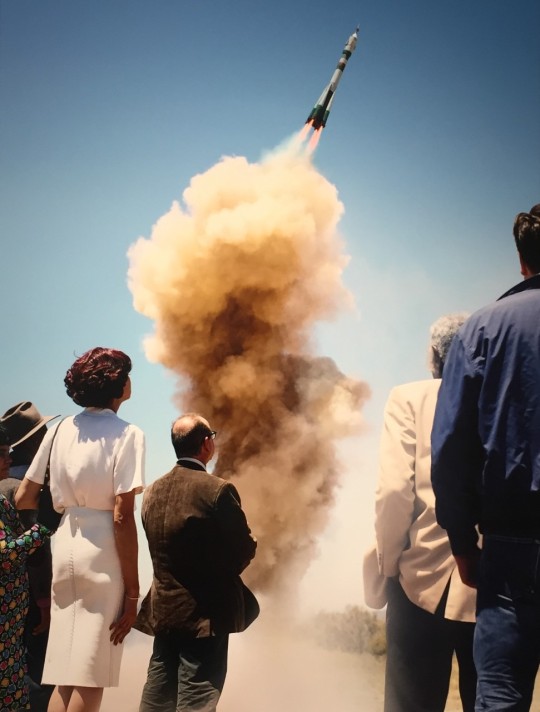
Alex Prager, Anaheim, 2017, c-print, Alex Prager Studio.
Prager has also mastered the moving image. I don’t usually spend too long in the film sections of exhibitions, but these pieces are utterly irresistible. Face in the Crowd from 2013, starring Elizabeth Banks, features a series of monologues from a diverse range of characters, interspersed between claustrophobic bustling crowd scenes. This, and 2010′s Sunday- two nearly identical frames simultaneously showing the same faces in a sports crowd before a startling conclusion - were my stand-out works. I could watch Prager’s images all day and would love to see her meticulous style in a full-length feature film, though that’s probably just being greedy.
Anyway, this is IT, you guys - the show of the summer. Don’t miss it!
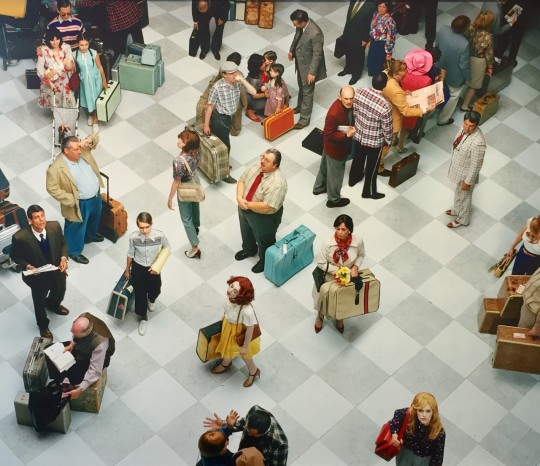
Alex Prager, Crowd #7 (Bob Hope Airport) (fromFace in the Crowd), 2013, archival pigment print, Alex Prager Studio.
Alex Prager: Silver Lake Drive is on at The Photographers’ Gallery until 14th October. All images are my own.

Sydney Parkinson, Three Paddles from New Zealand, 1769 © British Library Board
‘James Cook: The Voyages’ at the British Library
★ ★ ★ ★
I’ve said it once and I’ll say it again: the British Library are experts at immersive curation. The objects displayed in ‘James Cook: The Voyages’ are set amongst a backdrop of ice white walls, evocative of sweeping glaciers, that guide the visitor through each of Cook’s global expeditions. It has been 250 years since the HMS Endeavour set sail from Plymouth for the Pacific Ocean - followed by two further voyages in the 1770s - and this exhibition celebrates the scientific and navigational work of Cook and his team, which would change the world forever.
My visit to the show brought back some wonderful personal memories. I wrote a number of essays for both my BA and MA art history courses on mapmaking and expeditionary art, so a number of the drawings, maps and journals on display were familiar to me. It felt like visiting old friends! Furthermore, after my recent travels Down Under, I’ve been feeling a little consumed by wanderlust. This little escape from my busy London life did provide satisfaction, albeit temporary!
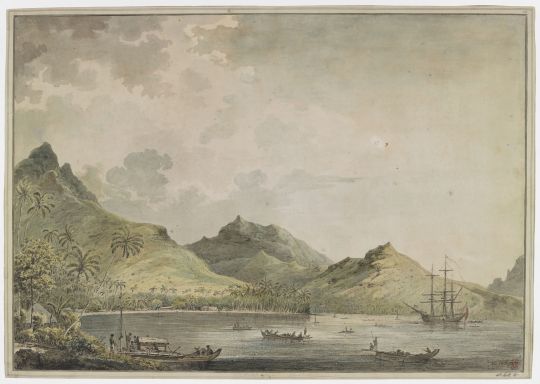
John Webber, View of the harbour of Huaheine, 1777
‘James Cook: The Voyages’ is on at the British Library until 28th August 2018. All images are courtesy of the British Library.






![Tooi [Tuai], Drawing of Korokoro’s moko, 1818, paper, 30 x 50 cm, Sir George Grey Special Coll Tooi [Tuai], Drawing of Korokoro’s moko, 1818, paper, 30 x 50 cm, Sir George Grey Special Coll](https://64.media.tumblr.com/4c1da7c960918e2c61205be8ab372e69/tumblr_pi8i3tJkBT1qcg3zwo1_500.jpg)